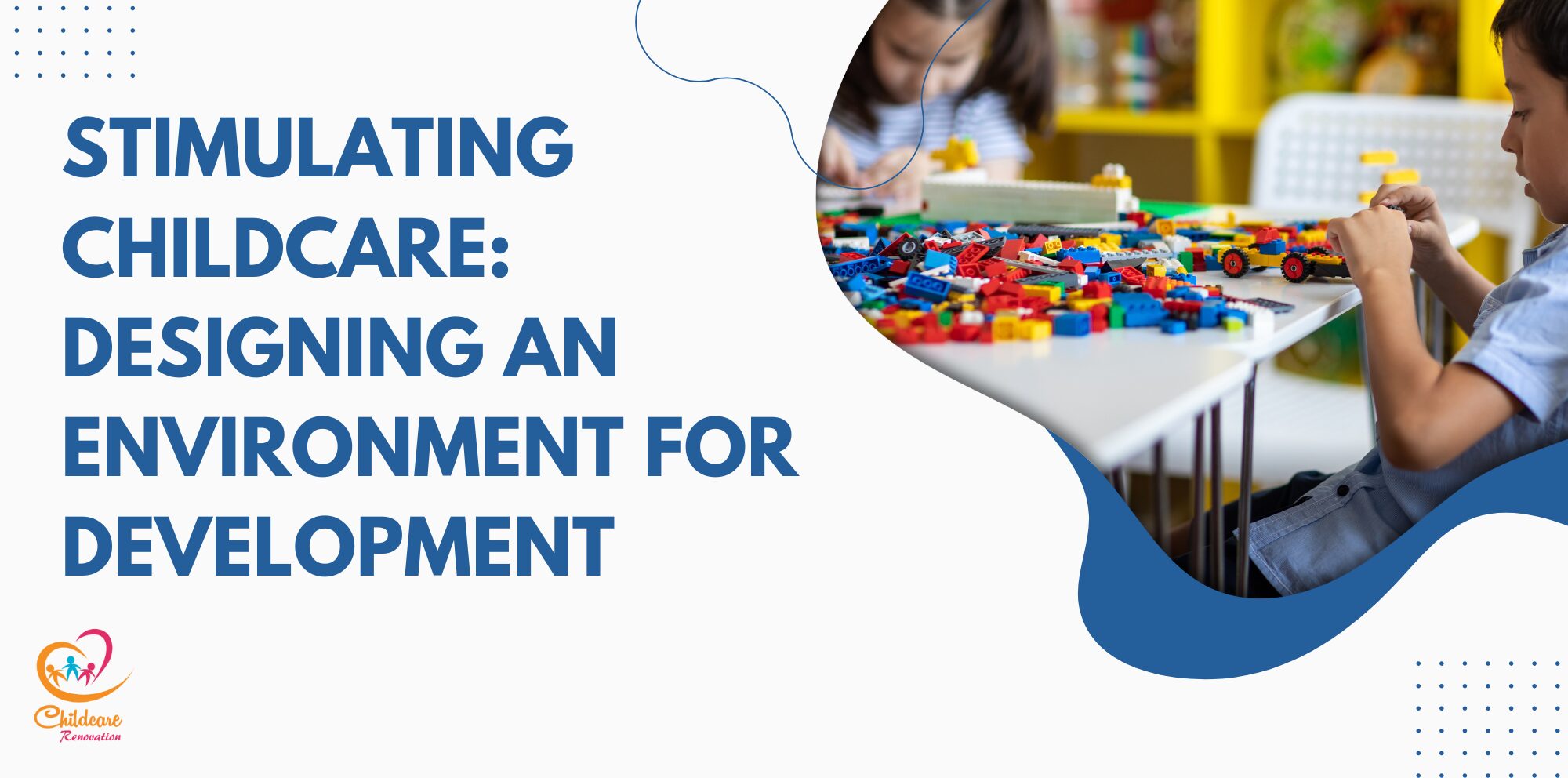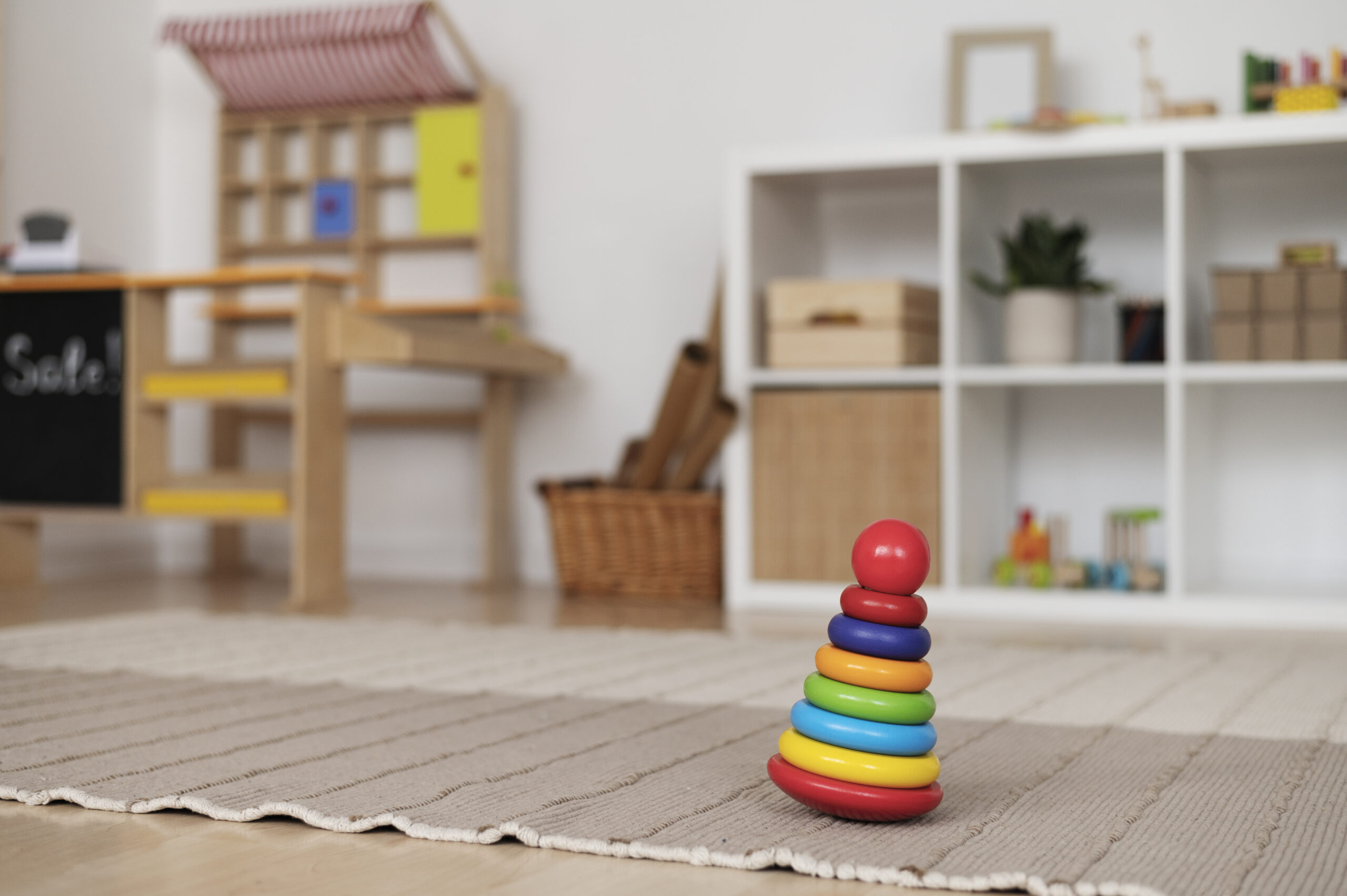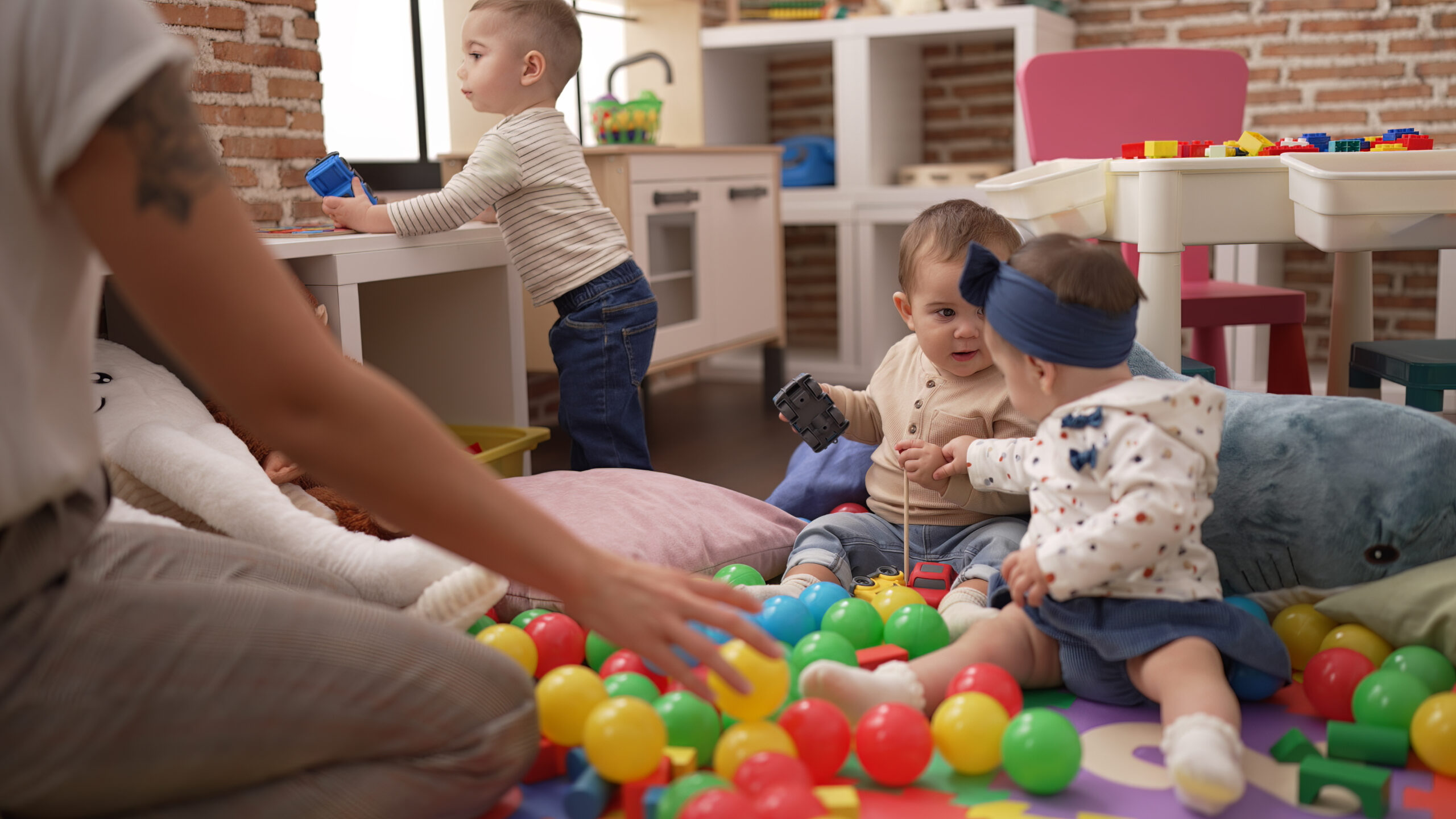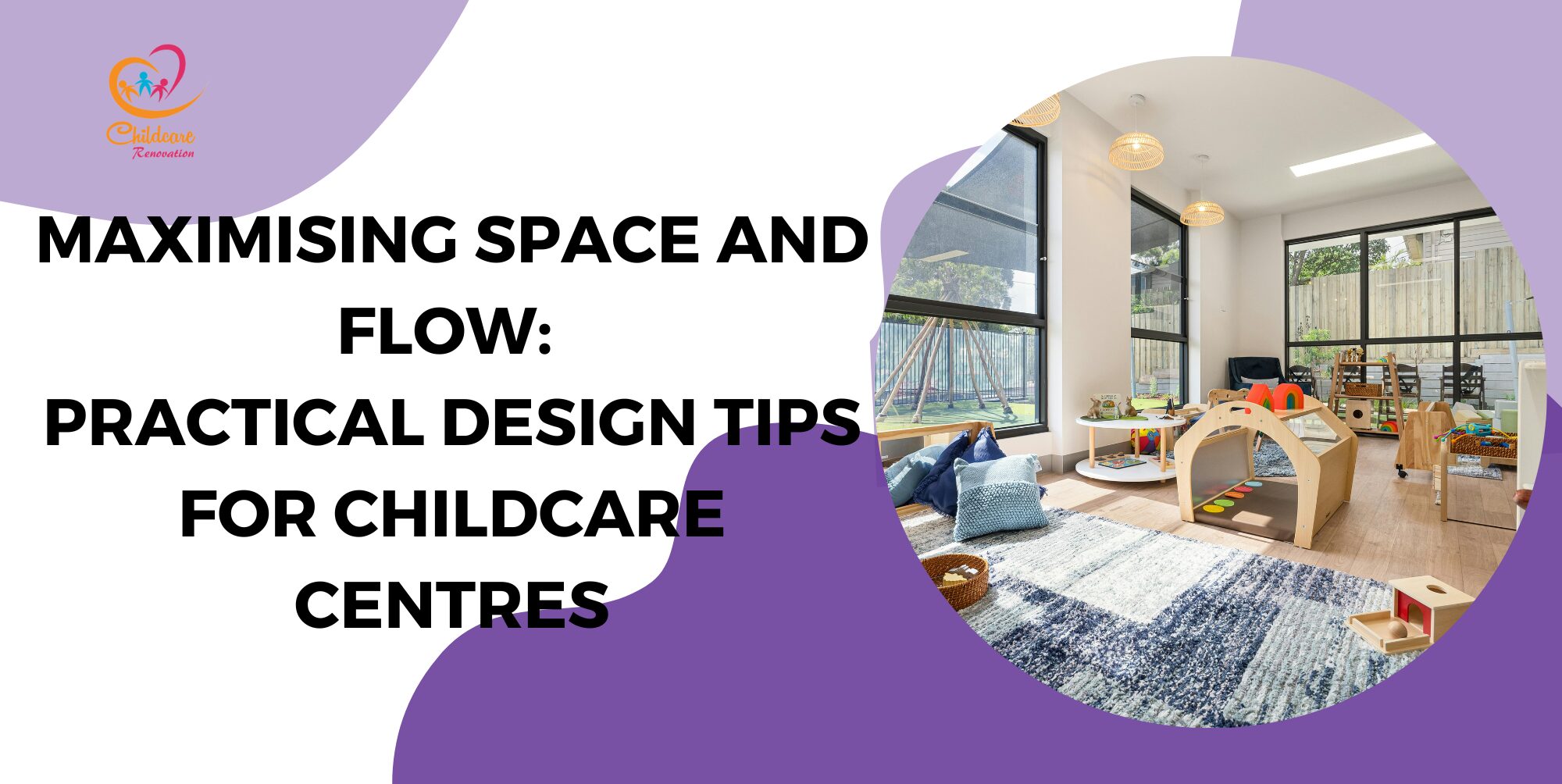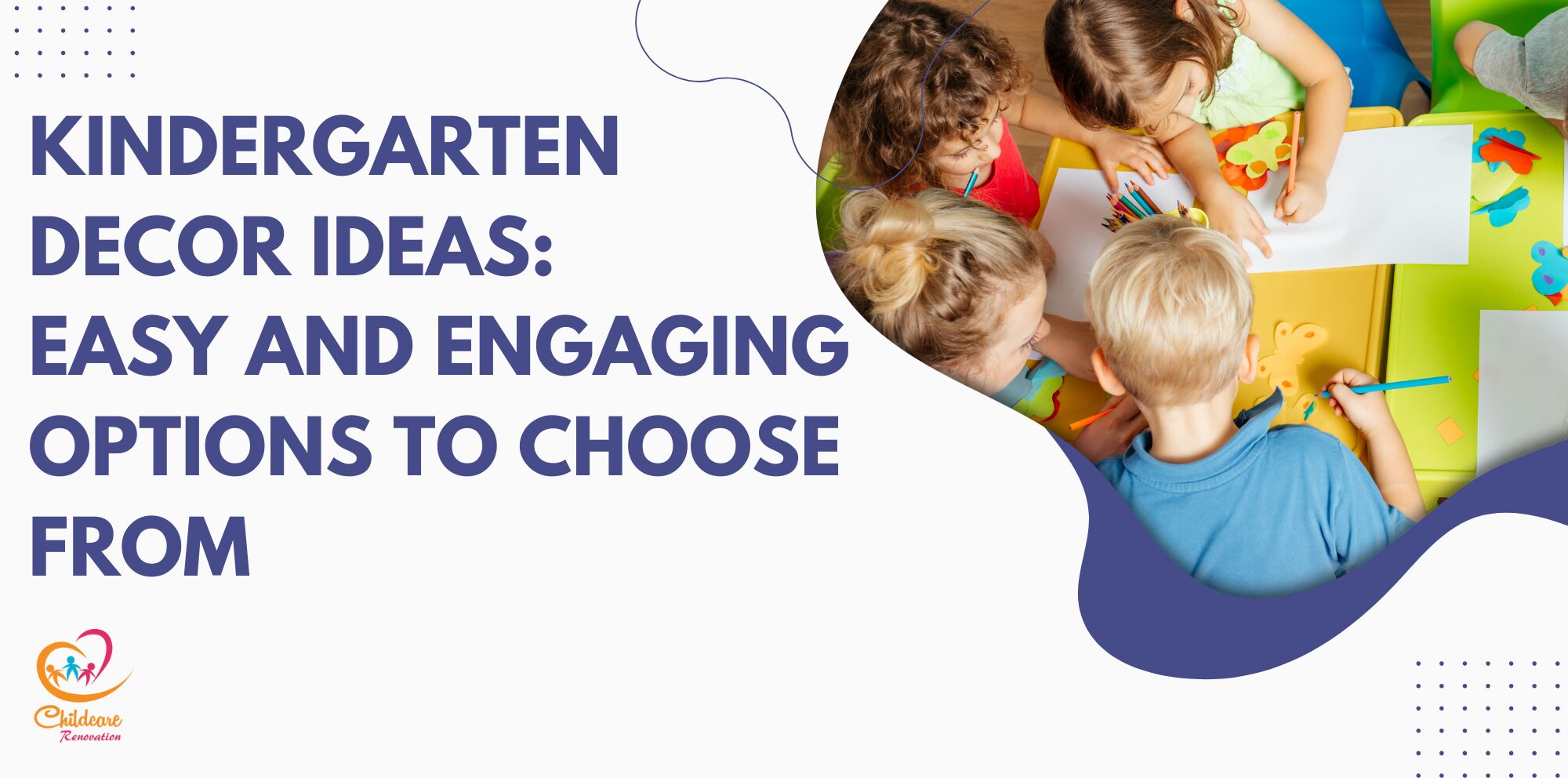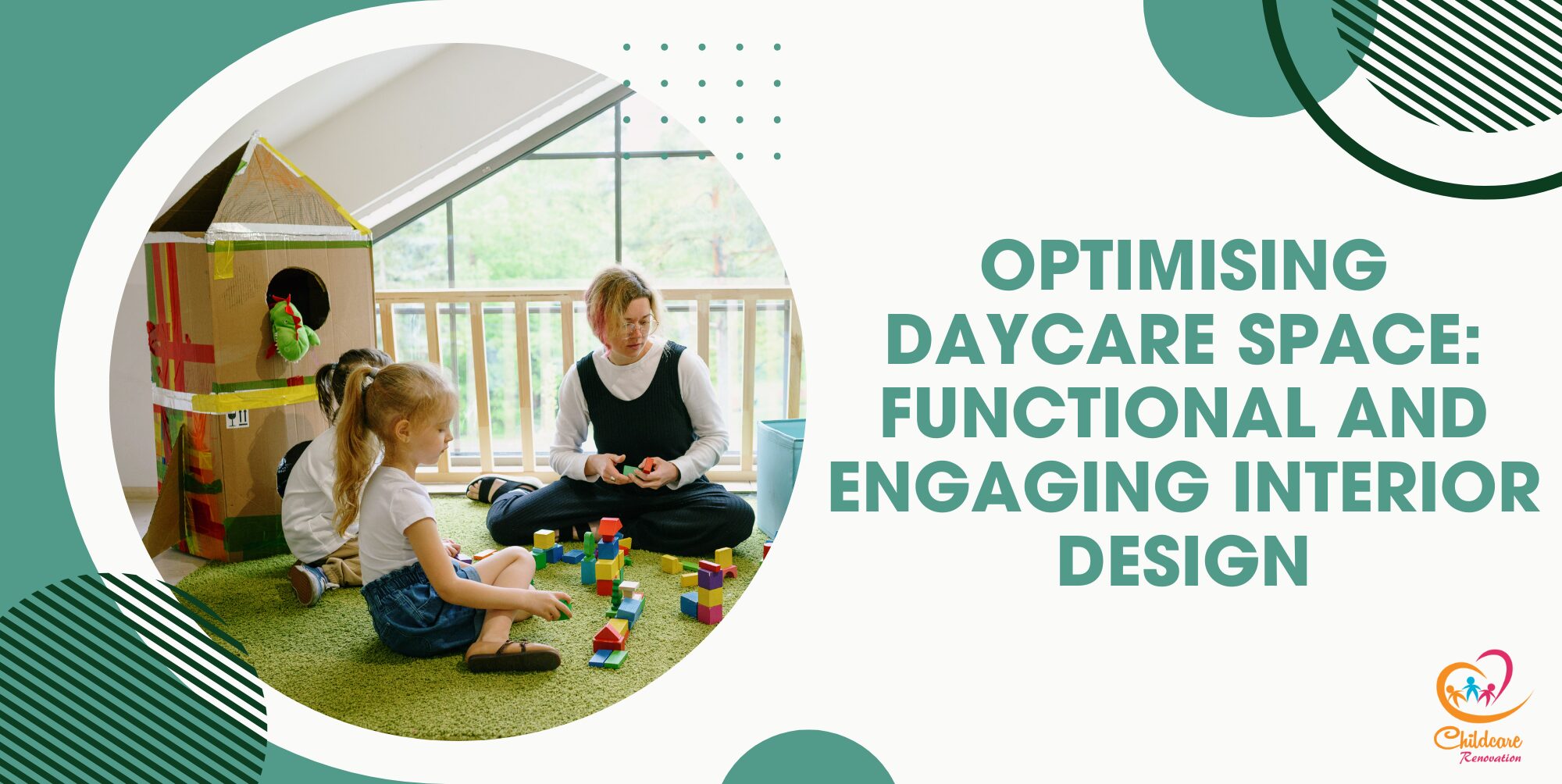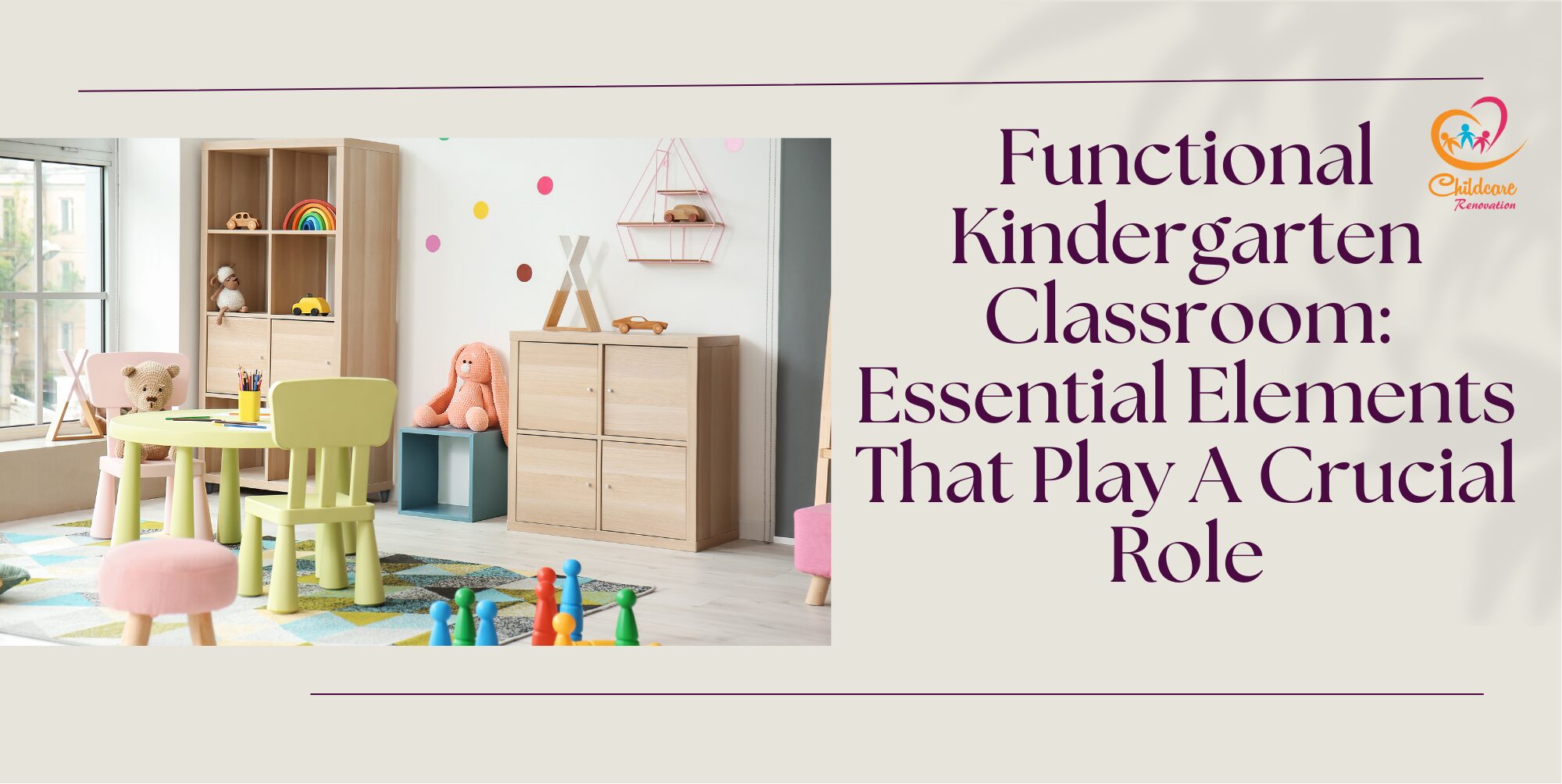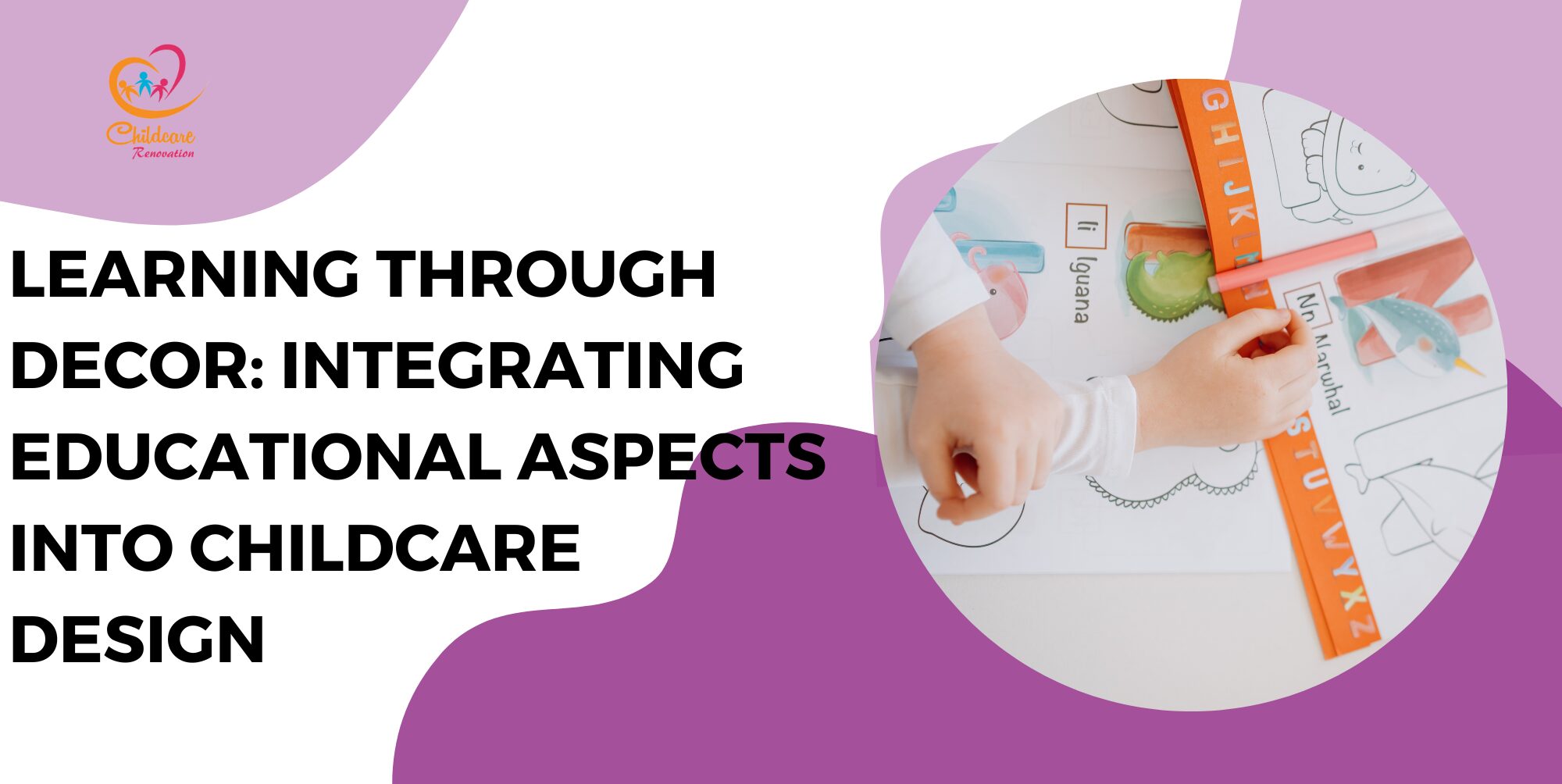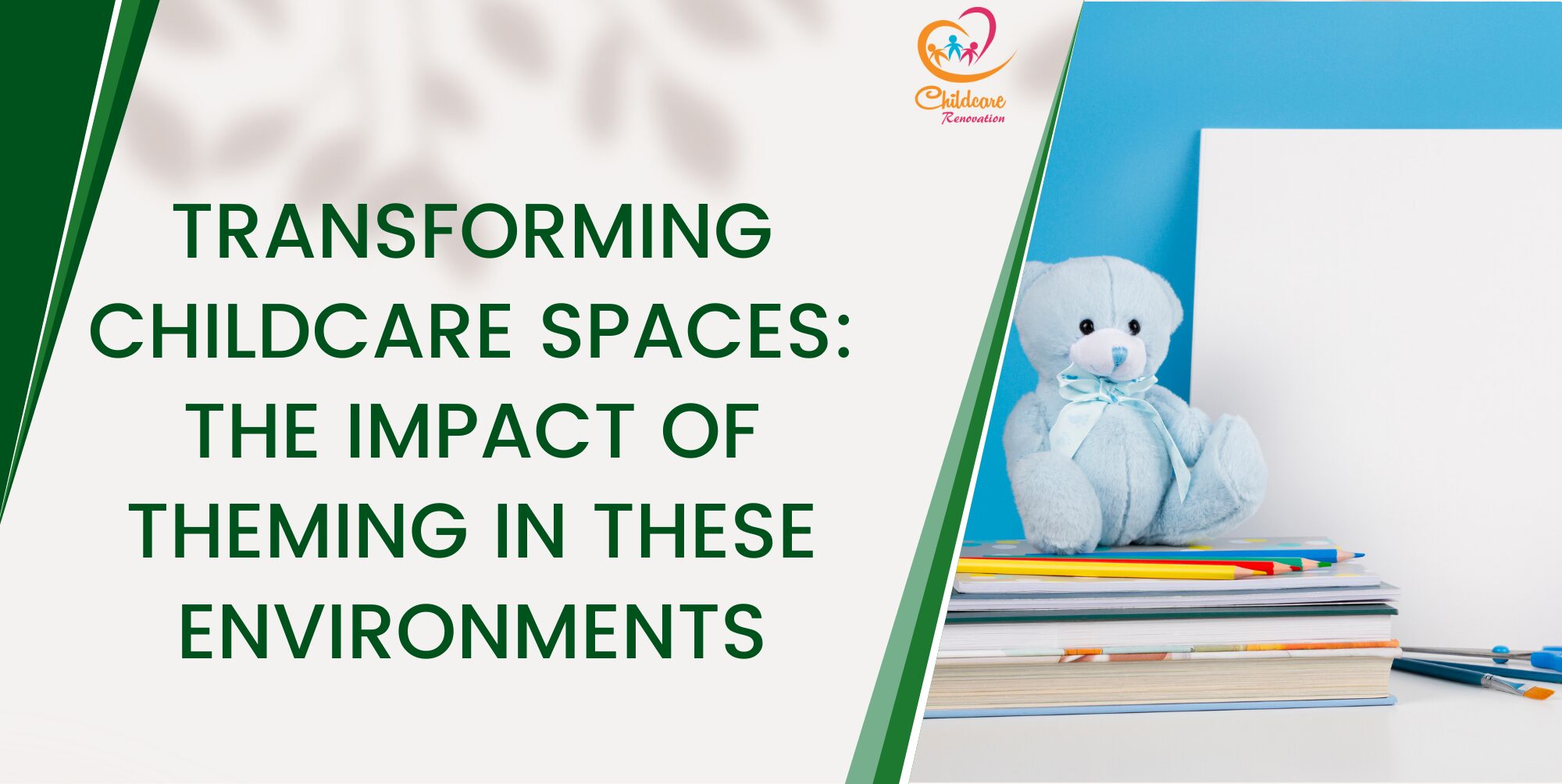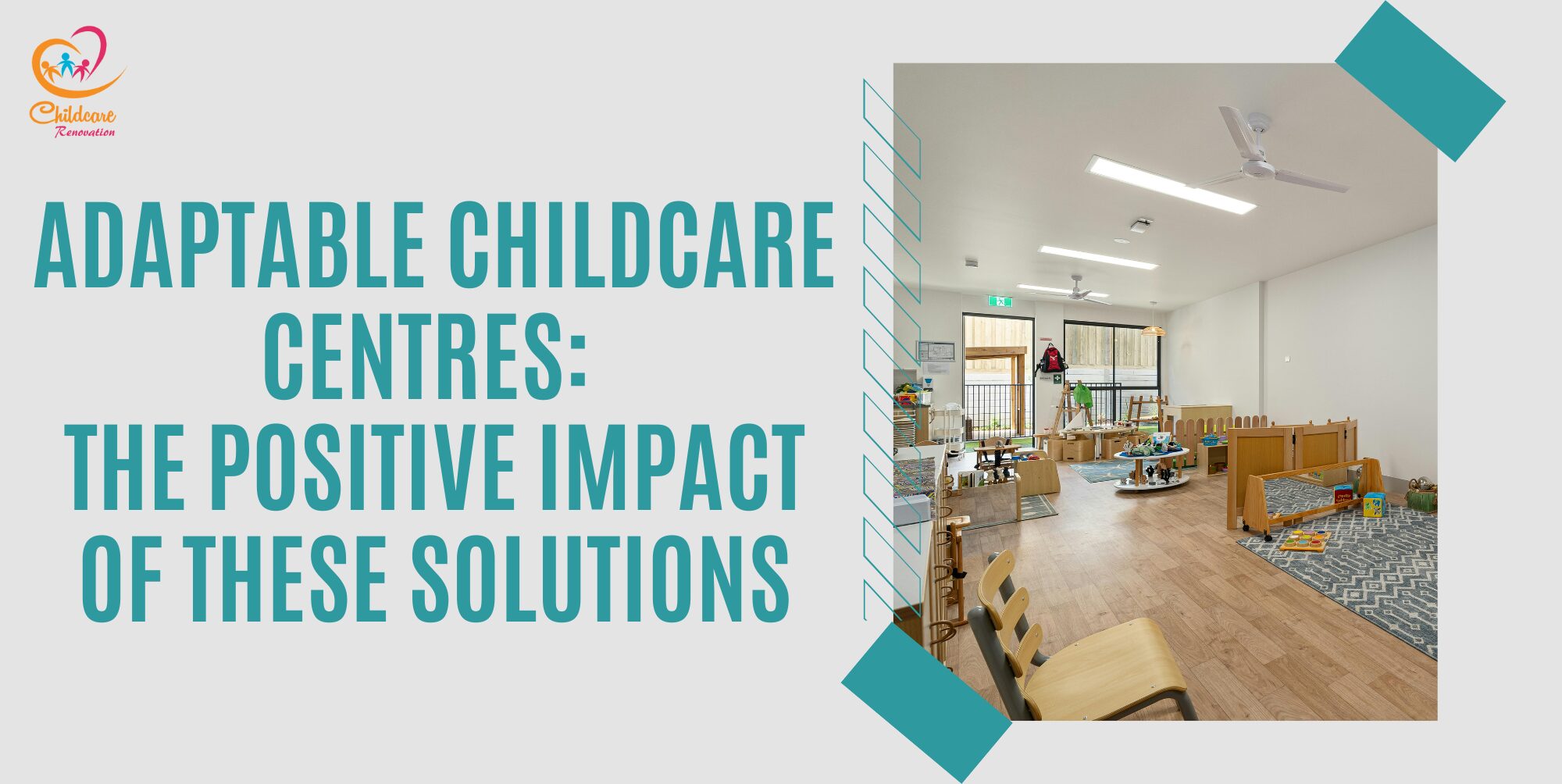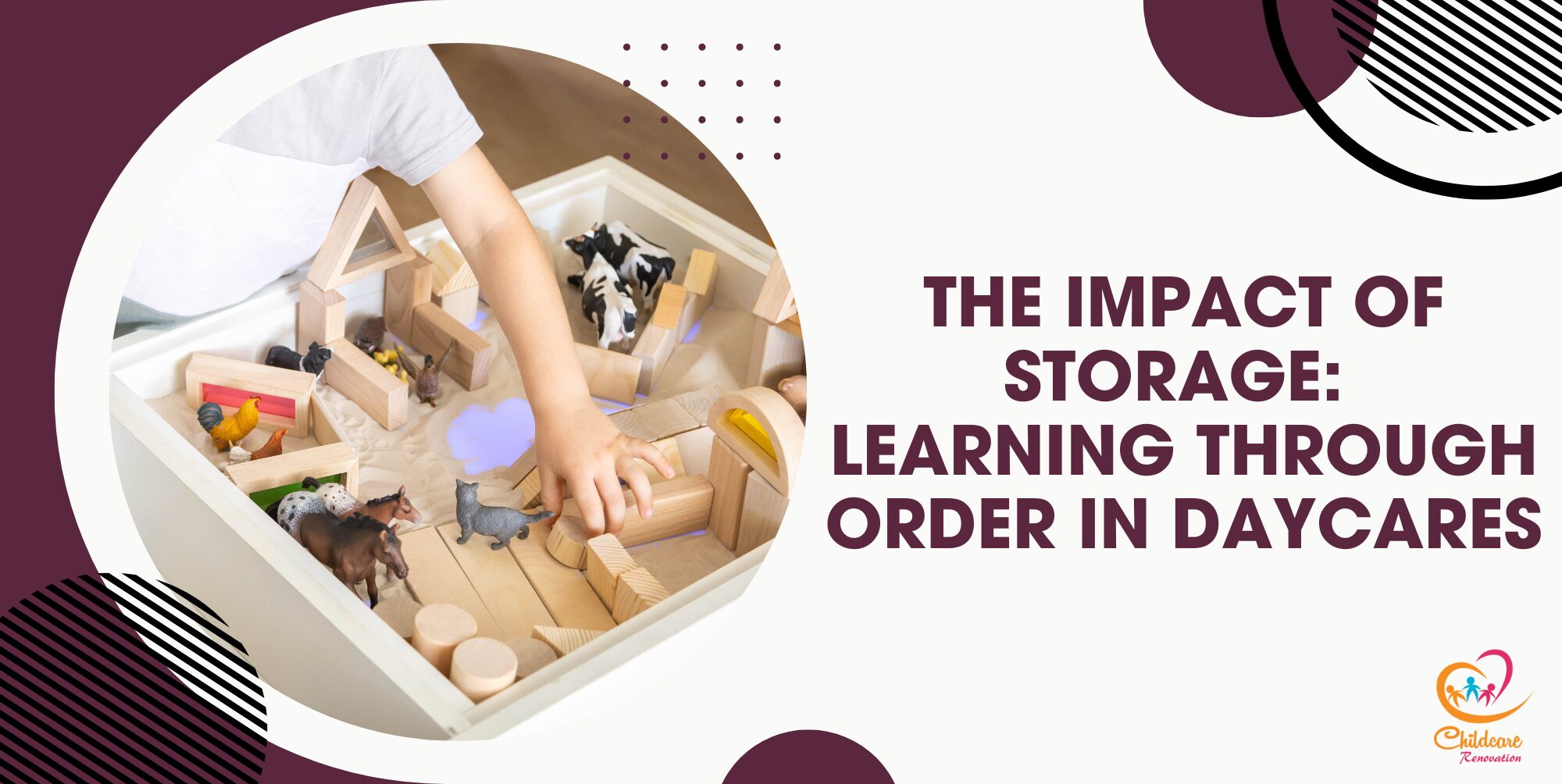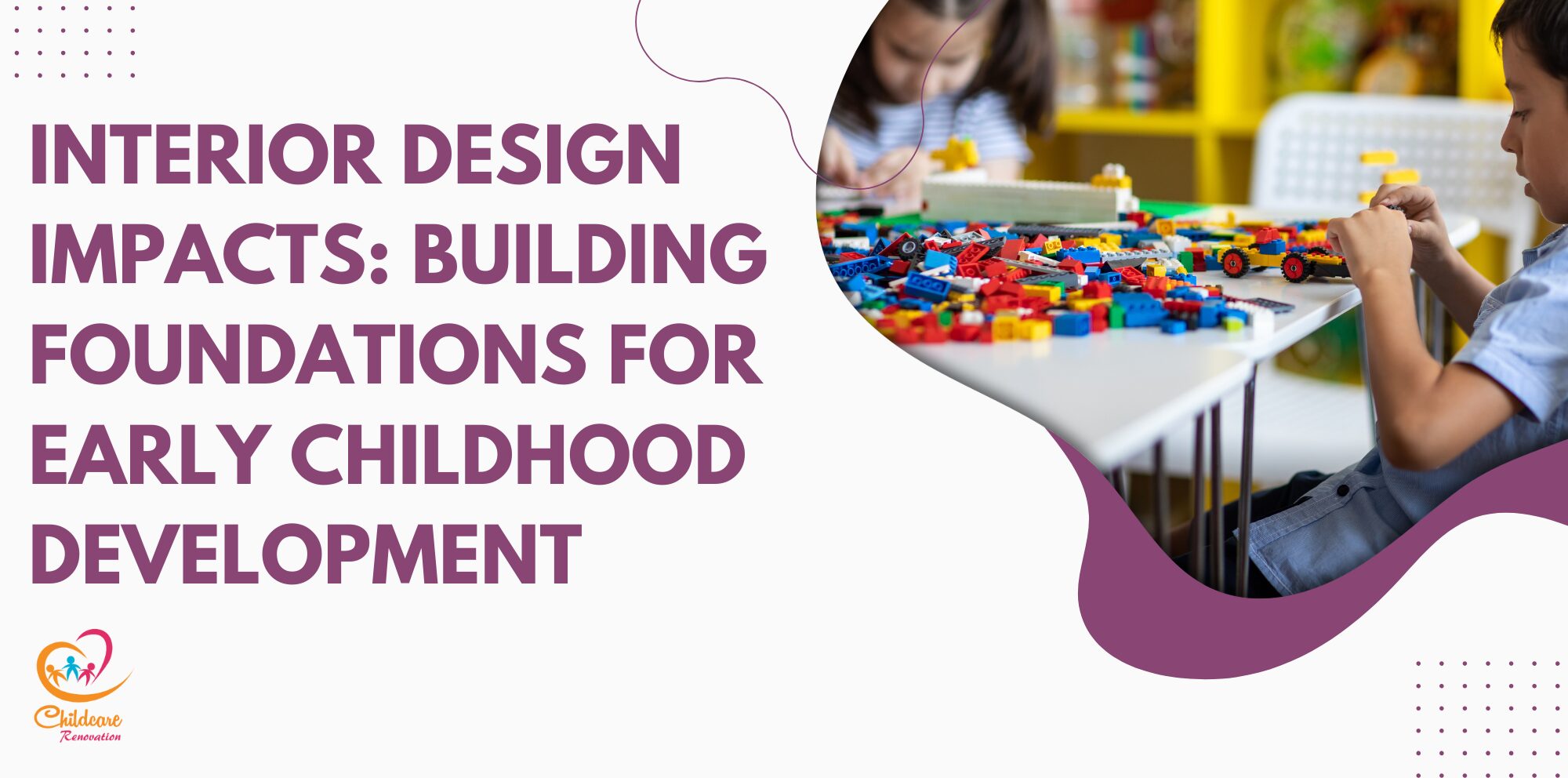Stimulating childcare centres are one of the most fundamental aspects to create a functional establishment. Here are some ways to create a stimulating childcare centre.
Stimulating Childcare: Designing A Child-Centric Layout
A child-centred design should be the very basis of any childcare environment that is stimulating and promotes development. It needs to be well-planned to meet the needs of the children, encouraging independence, exploration, and participation.
Open areas for play should be available in every setting, allowing freedom of movement and active play, but safe and easy to supervise. Well-defined learning zones for reading corners, art stations, sensory play, and pretend play allow for focused activities and smooth transitions. These should be clearly marked and arranged to avoid distractions, enabling children to engage fully in their activities. Child-sized furniture, including tables, chairs, and storage units, is crucial for promoting independence and comfort as children access materials on their own. Low, open shelving of toys and learning tools invites children to explore and make choices.
Flexible layouts, with movable furniture, allow for modification to meet the changing demands of different group sizes and activities throughout the day. Safety is ensured through clear pathways, soft-edged furniture, and proper organisation of materials to avoid accidents. Visual reminders, including colour-coded zones or labeled bins, support children’s understanding of the function of each space and provide opportunities to develop organisational skills.
By introducing natural elements in the form of wood furniture, rugs, or else, softening is given to such an environment; childcare can create child-friendly space, where creativity and curiosity are promoted and ensured due to social-emotional and cognitive development in a tenderly supportive atmosphere.
Stimulating Childcare: Enhance Mood And Learning
A well-developed stimulating childcare environment improves mood and encourages learning. Colours used appropriately affect children’s moods and intellectual development. Warm colours, for instance, are yellow and orange that give feelings of happiness and energy. They would therefore be appropriate in the play areas or group settings where interaction and collaboration are being developed.
On the other hand, cool tones like blue and green are soothing and conducive to concentration, hence ideal to be used in quiet reading nooks or nap areas. A balance of bright colours with neutral ones will keep kids interested yet not hyperactive. Lighting also plays a significant role — maximising natural light not only boosts mood but also improves concentration and overall well-being. It is further enhanced by incorporating sensory elements into the environment: textures such as soft rugs, smooth blocks, and natural materials provide tactile stimulation — soft background music or natural sounds create an auditory backdrop to soothe and inspire creativity.
@bricksbegin A childcare centre design with love and blend with nature elements 🍃🏡 (Part 2) Photo: Bricksbegin Design: Senscius Arc Location: Timbertots Childcare Centre, Cheras Kuala Lumpur #bricksbegin #kualalumpur #spacephotography #architecturalphotography #interiorphotography #interiordesign #videography #interiorvideography
Scents, such as lavender in nap areas, can help children relax, while avoiding overpowering smells ensures a comfortable space for all. In addition, the structuring of interactive and educational materials like wall-mounted puzzles, colourful charts, and turning books provokes curiosity and learning. Since it creates a well-rounded environment that caters to the balance between emotional and intellectual needs, a childcare institution provides an avenue for children to thrive, grow, and develop important life skills.
Stimulating Childcare: Encourage Physical Activity
Encouragement of physical activity in a childcare setting is important to support the overall development of children. A well-thought-out area of space to promote movement will enhance not only physical health but also cognitive, emotional, and social development.
In creating a stimulating environment, climbing structures, slides, and balance beams stimulate children to participate in activities that develop their motor skills, coordination, and strength. These activities help children build confidence as they master new physical challenges. Safe, open areas for running, jumping, and exploring promote cardiovascular health and support energy release, enabling children to focus during quieter activities. Establishing obstacle courses with challenges appropriate for the age group further enhances problem-solving and planning skills and offers fun, engaging ways for children to practice their agility.
Soft play areas, with their mats and low-structure features for the smaller kids, enable tummy time, crawling, and climbing-all so very important for the child’s sensory and motor development. Yoga and movement corners can also be included to enhance flexibility and balance for mindfulness and body awareness. Outdoor sandboxes, water play areas, and grassy areas continue the opportunities for investigation and physical activity within a natural environment.
Encouraging active play helps the child build a solid foundation for their physical health, as well as encourages social interaction, teamwork, and emotional regulation; therefore, it is an integral part of any complete childcare environment.
Stimulating Childcare: Foster Social Interaction
Providing opportunities for social interaction forms part of any stimulation childcare environment which furthers child development. In addition, various social interactions amongst children help the children to learn communicative, emotional, and community skills.
Such areas need to be designed that will promote collaboration and encourage group play if these interactions are to be nourished. This means that seating circles, like the setup of circular tables or cozy nooks of chairs, encourage brainstorming, debating, and collaborative problem-solving amongst children. The other ways such learning can be provided for involve game playing, which can be done either cooperatively or interactively. Using simple board games, building, or role-play scenarios will challenge the children to take turns, share materials, and even practice basic negotiation.
@nidoearlyschool Step inside Nido Early School Bulleen, where every corner is thoughtfully designed to inspire and nurture young minds. Discover our beautifully crafted indoor spaces that embody the Reggio Emilia approach ✨ #nido #nidoearlyschool #reggio #reggioemilia #reggioemiliaapproach #childcare #earlychildhoodeducation #education #parenting #preschool #earlylearning #children #toddler #daycare #kindergarten #parenthood
A nook for storytelling and show-and-tell nurtures group participation in a development of emotional expressions. Of particular importance is allowing time and space for children to watch and learn from other peers. For that matter, sight-spaces should be present as often as possible in settings where children have an opportunity to view their co-peers and associate themselves with others with ease. Moreover, the availability of various materials that can be used simultaneously by children, like big blocks, puzzles, or creative art supplies, allows them to put a common end across.
In this way, they learn how to communicate, cooperate, and solve disputes with their friends through these means, which is important for their emotional and social development. Childcare providers create an environment that helps them interact and assures that cognitively, socially, and emotionally, they are developing appropriately for future relationships and teamwork within their larger community.
Stimulating Childcare: Priority On Safety And Accessibility
Safety and accessibility are prioritised in creating a stimulating environment for children’s development. Indeed, a safe environment allows the children to explore, play, and learn without exposing themselves to unnecessary risks. This calls for the use of non-toxic materials, soft-edged furniture, and equipment that is strongly built to minimise any instances of accidents.
For instance, tables and shelving should not have sharp corners but rather be padded, and toys and other play structures should be constructed to endure rough use without causing injury. This requires regular inspection of equipment for wear and tear to maintain safety standards. Equally important is accessibility. Children, particularly at younger stages of development, should be able to access resources and engage in activities independently. Child-sized furniture such as tables, chairs, and storage promote children’s easy interaction with the environment. Shelves and materials should be accessible so that children can make choices independently and develop their decision-making skills.
Pathways should be clear, wide enough to allow easy passage of wheelchairs or strollers, and accessible for all children with mobility needs. While making sure that safety and accessibility are ensured, childcare environments nurture a sense of security, which encourages exploration, social interaction, and creativity.
Children are more likely to engage in activities and take risks in a space where they feel physically secure and empowered to move freely. Eventually, a safe and accessible environment protects the child while extending to them developmental experiences in which they can learn and grow at their own pace.
Speak with The Experts
Planning to get started at your kindergarten but have no idea about it?
Childcare Center Renovation Singapore is a reliable company for renovation and interior design. They have about ten years of experience in this field and have a good reputation among customers.
Call us now to get your desired kindergarten design ideas now!

